One of the most amazing landmarks in Egypt is an ancient Egyptian temple complex and an island in the southern part of the country.
Somehow, the temple isn’t located on the island with the same name though, and there’s a remarkable reason for that.
In this article, you’ll discover the ultimate list of interesting facts about Philae, a fascinating ancient landmark with a remarkable history!
1. The island is located near a famous dam in southern Egypt
Philae is the name of an island that is located in the reservoir created by the Aswan Low Dam, a fascinating dam on the Nile River in southern Egypt (or Upper Egypt).
This dam was completed between 1899 and 1902 and resulted in the island and surrounding rapids being flooded on a regular basis.
Originally, there were a total of 2 islands which is also the reason why it has been referred to in plural form since ancient times. The smaller of the two islands featured a wide variety of temples and religious monuments that were constructed over many centuries.
This island was also relatively small and had a length of just 380 meters (1,250 feet) and a width of 120 meters (390 feet).
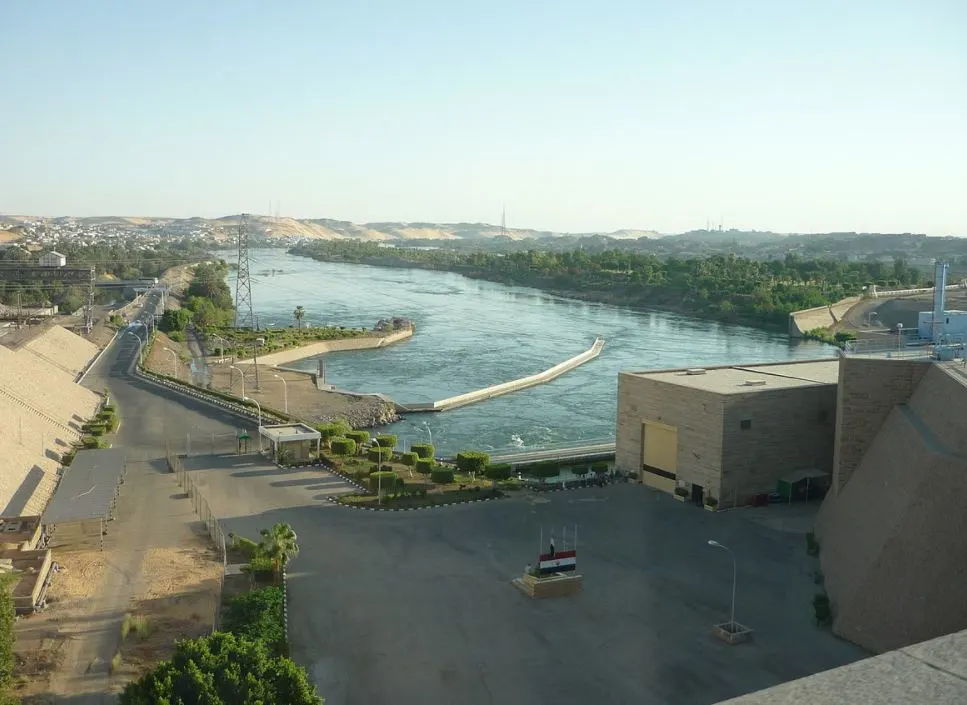
2. The temple is not located on the island that it was originally built
Because the Aswan Low Dam resulted in the island being partially submerged since its completion in the early 20th century, a massive UNESCO preservation campaign was started in the 1960s.
The main reason was the deteriorating state of the otherwise relatively well-preserved ancient monuments due to the frequent flooding, and the plans to build the Aswan High Dam, just south of Philae.

Just like the Temple of Abu Simbel, the temple complex of Philae was completely dismantled and rebuilt on a nearby island called Agilkia Island. This campaign eventually ended on March 10, 1980.
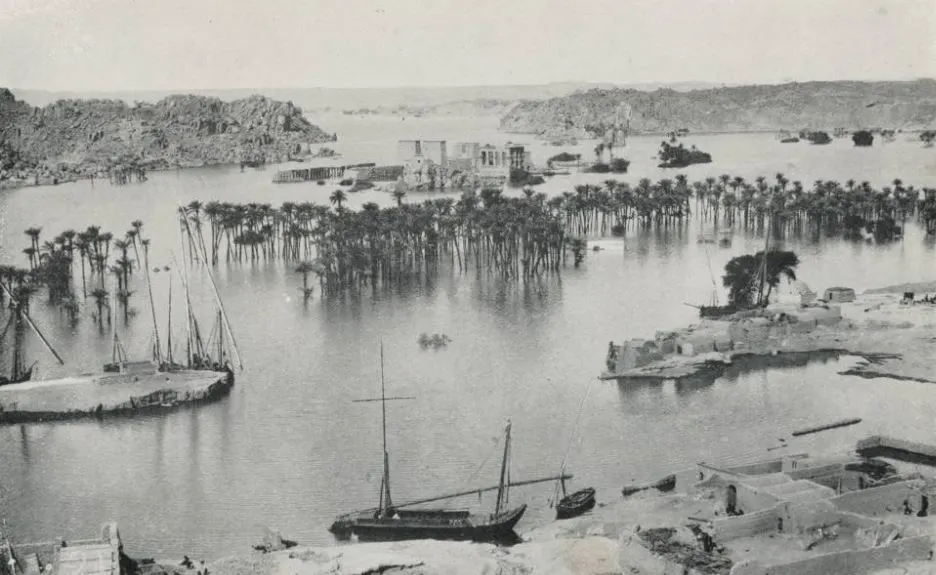
3. The island was very important for a particular belief
The reason why the temple complex was built on the island Philae wasn’t an accident. The island was considered to be of extremely high importance for a particular reason.
The island was considered to be one of the burying places of Osiris, an important deity in ancient Egyptian religion. He was a multi-tasker because he was the god of fertility, agriculture, vegetation, the afterlife, the dead, resurrection, and even life itself!
This level of importance was shared by both the Egyptians to the north and the Nubians to the south.
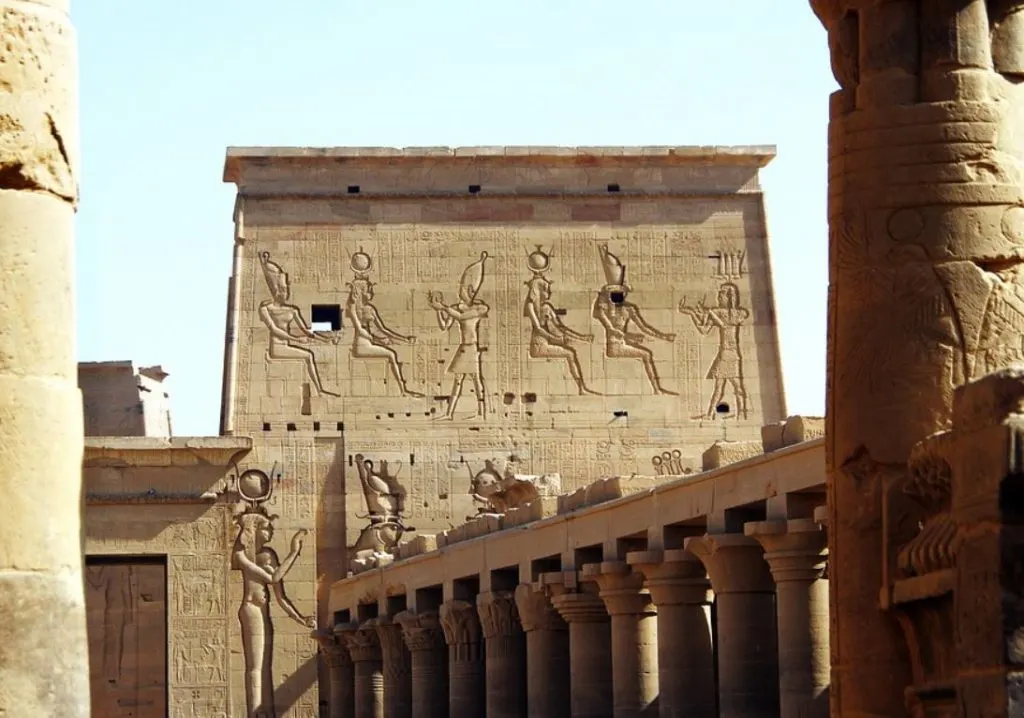
4. The oldest structure probably dates back to the 7th century B.C.
Even though the evidence doesn’t make it 100% certain, it’s assumed that the first shrine on the island was built here in the 7th century B.C., more specifically by Pharaoh Taharqa (reign between 690-664 B.C.) of the 25th Dynasty.
One of the most remarkable facts about Philae is that this shrine was dedicated to another popular god named Amun. As mentioned, the only evidence of this fact is some blocks with inscriptions being found here, but they might as well have been brought from other parts of Egypt.

5. Not much remains from the first temple that was built here
Because the island was considered to be the burial ground of one of the most adored deities in ancient Egypt, this also means that the first temple on the island was built in honor of Osiris.
This temple wasn’t built at the same scale as the other famous temples built in ancient Egypt, though, and was only a small kiosk built by pharaoh Psamtik II of the 26th Dynasty.
Today, only a small kiosk built by pharaoh Nectanebo I of the 30th Dynasty and some elements incorporated in later structures survive.
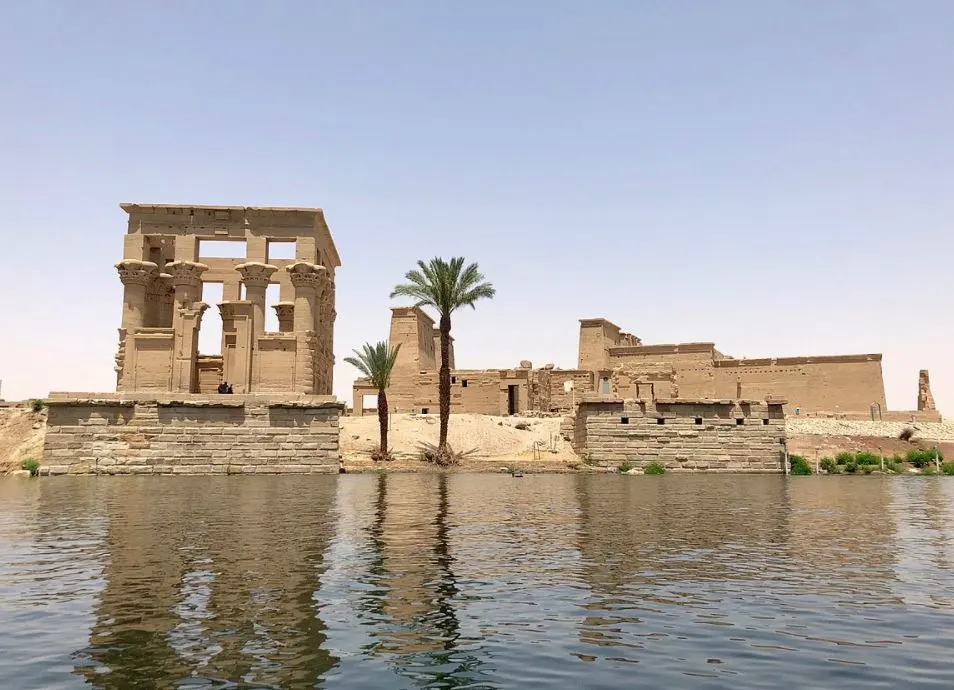
6. The island became popular for pilgrims during the Ptolemaic era
Various pharaohs expanded the complex and this didn’t change during the Ptolemaic era. Of all the current buildings on the site, an estimated 2/3 were built during the Ptolemaic Kingdom (305-30 B.C.).
This building spree was fueled by the fact that Philae had become a popular site for pilgrimage during this period, attracting visitors from all across the area as far as the Mediterranean. Inscriptions on the buildings made by pilgrims have been found all over as evidence of this.
Perhaps even more intriguing is that additions were made by Nubian king Arqamani (late 3rd-early 2nd century B.C.) as well, something that attracted countless pilgrims from the south.
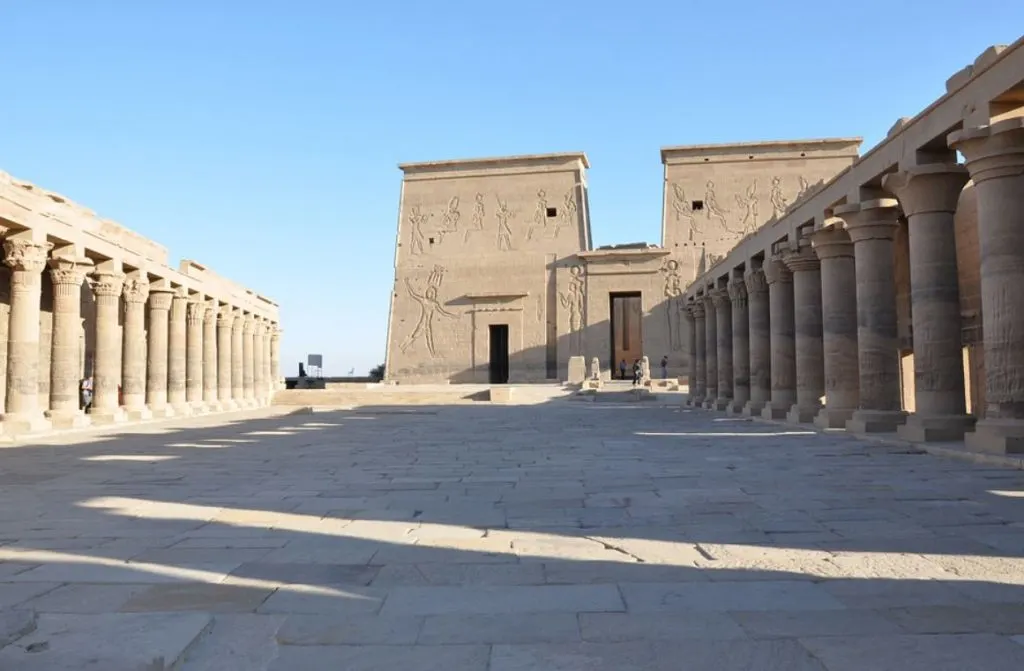
7. Multiple Roman Emperors made contributions to the island
Even though the number of pilgrims visiting the island during Roman times decreased significantly, various Roman Emperors made contributions to the structures on the island and even built new ones.
Emperor Trajan built a kiosk on the island that was moved to its new location. Further additions were made going as far as Emperor Caracalla (early 3rd century) and Emperor Diocletian (early 4th century).
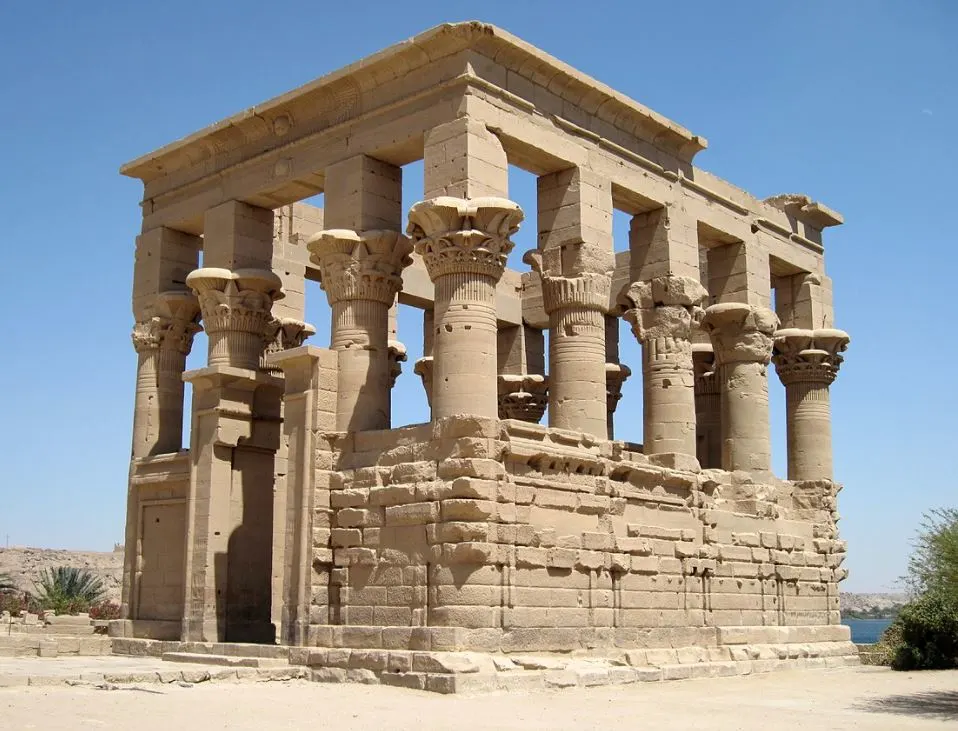
8. Christianity and pagan religions co-existed here for a period of time
Shortly following the persecution of Christians by Diocletian in the early 4th century, Christianity became the Roman Empire’s official religion following the reign of Constantine the Great.
This also means that various pagan temples were transformed into churches and that multiple new churches were built on the island as well.
One of the most remarkable facts about Philae is that pagan worship continued here until the 6th century, which means that Christianity and pagan religions co-existed here for well over a century.
This eventually all ended and even the Temple of Isis was converted into a church dedicated to Saint Stephen at one point.

9. One of the obelisks was brought to England in the 19th century
Just like many other ancient Egyptian temple complexes, two obelisks were erected here which stood at the entrance of the Temple of Osiris. These were accompanied by huge granite lions as well.
These obelisks were discovered by English politician and explorer William John Bankes (1786-1855) in 1815 and brought back to England, more specifically a large country house named Kingston Lacy in Dorset, South West England.
This obelisk ended up here in 1830 and still stands on this location today!
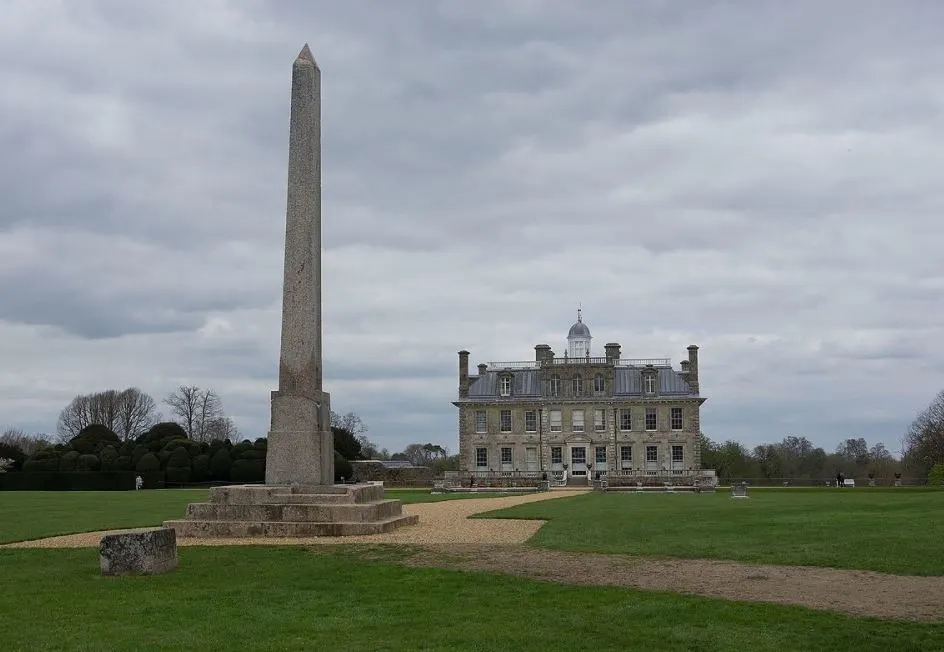
10. Tourism to Philae started as early as the 19th century
Bringing back the obelisk to England was part of a movement of interest in ancient Egypt in Great Britain in the 19th century. This was also a period in which multiple Neoclassical artists created artworks and designed buildings based on ancient models.
Because of this widespread interest, tourism to Philae started to flourish around the same time and gradually increased during Victorian-era Britain (1837-1901).

11. The island was raised twice in the 20th century
The Aswan Low Dam was a major construction project that was completed in the early 20th century, resulting in the island of Philae flooding regularly. This often submerged the ancient monuments as well.
The only solution deemed possible at the time was the raising of the island, something that happened twice from 1907 to 1912 and from 1929 to 1934. It was to no avail because the only time that the island wasn’t flooded was between July and October, the time the dam’s sluices were opened.

12. Rebuilding the temple complex as a massive endeavor
By the 1960s it became clear that the only real solution to this problem was to completely dismantle the temple complex and rebuild it on another location. This project was initiated by UNESCO and started in the 1960s when it became clear that the monuments would be lost following the completion of the Aswan High Dam in the 1970s.
Photogrammetry was used to get exact measurements of the structures and all buildings were dismantled. This resulted in a combined total of 40,000 blocks of between 2 and 25 tonnes!
These blocks were eventually transported to the nearby Agilkia Island, which is located just 500 meters (1,600 feet) away, and completely reassembled.
The completion of this successful project is the reason that we can still enjoy these magnificent structures today!

